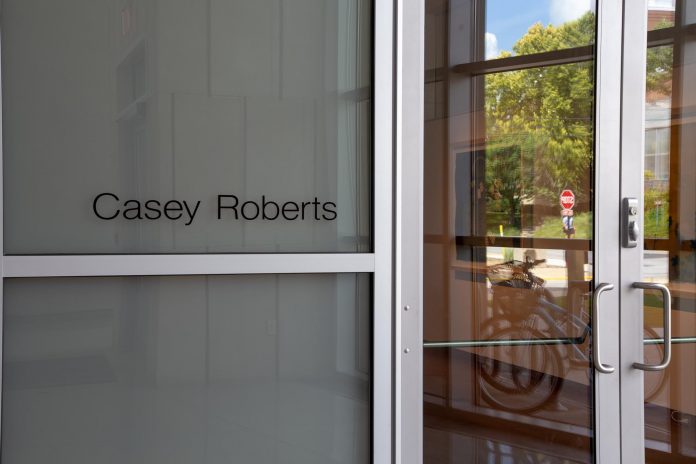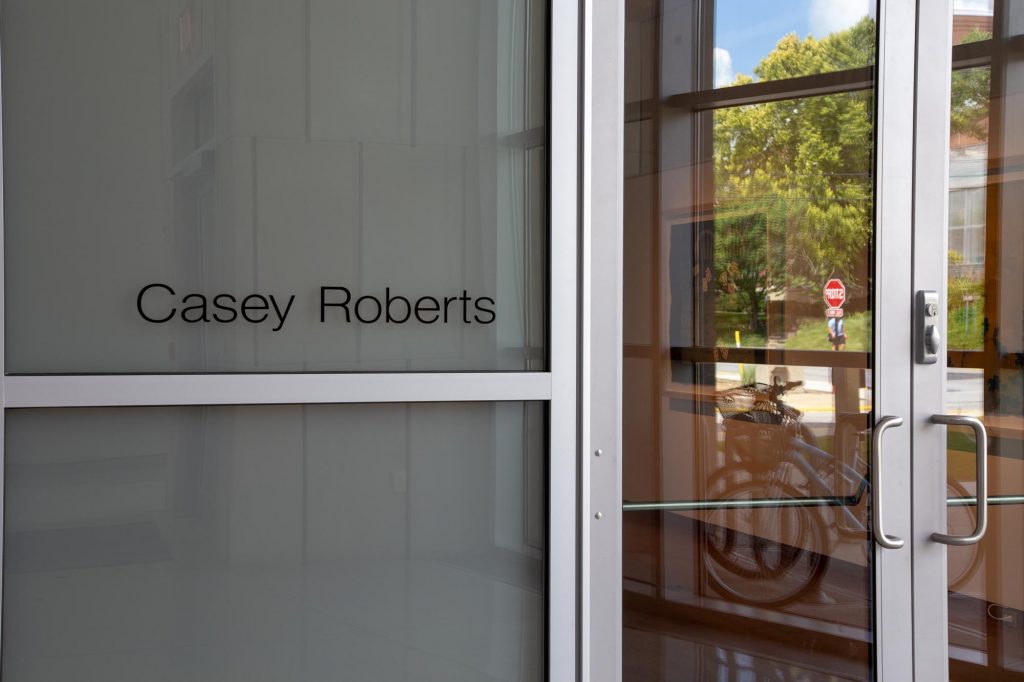

Casey Robert's use of cyanotype will never have you feeling blue. He incorporates cyanotype technique into his paintings, which uses a photochemical process to produce a blue print similar to the indigo blue color.
The Peeler Art Center Visual Arts Gallery is now exhibiting the works of the Indianapolis-based artists and features a completely new body of work painted this year. According to Craig Hadley, director and curator of exhibitions and University collections at DePauw University, oftentimes a solo exhibition features a mix of new and older artworks. “In that respect, Casey's exhibition demonstrates a commitment to experimentation and exploration of his chosen medium and subject matter,” Hadley said in an email interview.
The beautiful blue colors embrace you as soon as you step into the gallery. Each work delicately painted on a large square paper depicts the nature and its quietness, mysteriousness, and beauty.
The exhibit will be open until Oct. 10 and features works that have their unique appeal, but also connect. From the work titled “white buffalo (caught in the comets glow),” you can feel the cool air touching the buffalo’s hairs kindly and peacefully. The comet sparkles brightly but humbly above the giant creature stepping through the flowers.
In "Whale Tale," the whale tale moves the water gently but also dramatically. “As a viewer, it is hard not to be drawn to the grand scale of Casey’s cyanotype collage paintings,” Hadley said.
The cyanotype process produces a cyan-blue print as a result of a chemical reaction. “I think this color is very natural,” junior Hazuki Nakamata said. “I feel this color is so special. It is not something we can get from normal paints.”
The artist himself was inspired by the beautiful colors this older photo process produced. “I like the process of it,” Roberts said. He explained that it usually requires two or three stages to get the desired color, and making mistakes often gives him new texture that is better than his original plan.
Working with this technique for the past eighteen years, Roberts describes his current paintings as more sophisticated than earlier ones. In “White Buffalo (caught in the comets glow),” for example, he used subtracted technique. He explained that he washed out the photochemical solution before he exposed it to UV light, which added the real texture to the buffalo’s fur.
After enjoying the expressions produced by the special blue color, viewers start to notice other special aspects in Casey’s paintings. “There are always two things paired like two owls, two birds, and two chairs,” sophomore Nemekhbayar Nergui said.
Nakamata agreed with Nergui and pointed out that Roberts’ art seems “to be painted from the viewpoints of people.”
